1
HOME > Business >
COMMON GREENWASHING TACTICS IN FASHION
Written by Ivan Yaskey in Business on the 12th September 2022

As we continue to learn more about the impact of our choices on the environment, many of us aim to be more sustainable. This extends from recycling and composting to reducing emissions to consuming less plastic overall. Yet, becoming more sustainable isn’t so simple. It’s not always clear if a product can be recycled – or even where you can recycle it. Terms like “organic” and “natural” make it seem like a product’s better for the environment, but often don’t consider the full process of manufacturing and disposing of it. In between, the profit-or-bust demands of a capitalistic society have given way to greenwashing: often an incomplete or biased picture of a product’s or company’s impact. The reality is, greenwashing is everywhere – and fashion is no exception. Look out for some of the following tactics:
What is Greenwashing?
“Greenwashing” tactics ultimately prey on the fact that a majority of consumers – about two-thirds, according to a 2015 Nielsen poll – seek to make more sustainable purchases. The phrase emerged in the mid-1980s: At the time, environmentalist Jay Westerveld called out hotel chains’ campaigns requesting customers hold onto their towels to reduce water usage. Since then, the term has broadly applied to various corporate and industry initiatives designed to make a business seem more sustainable than it actually is. In many cases, the business makes minimal, if any, changes to its operations while claiming to be reducing its environmental impact. Greenwashing these days tends to encompass deceptive wording or focus on a single operational area.
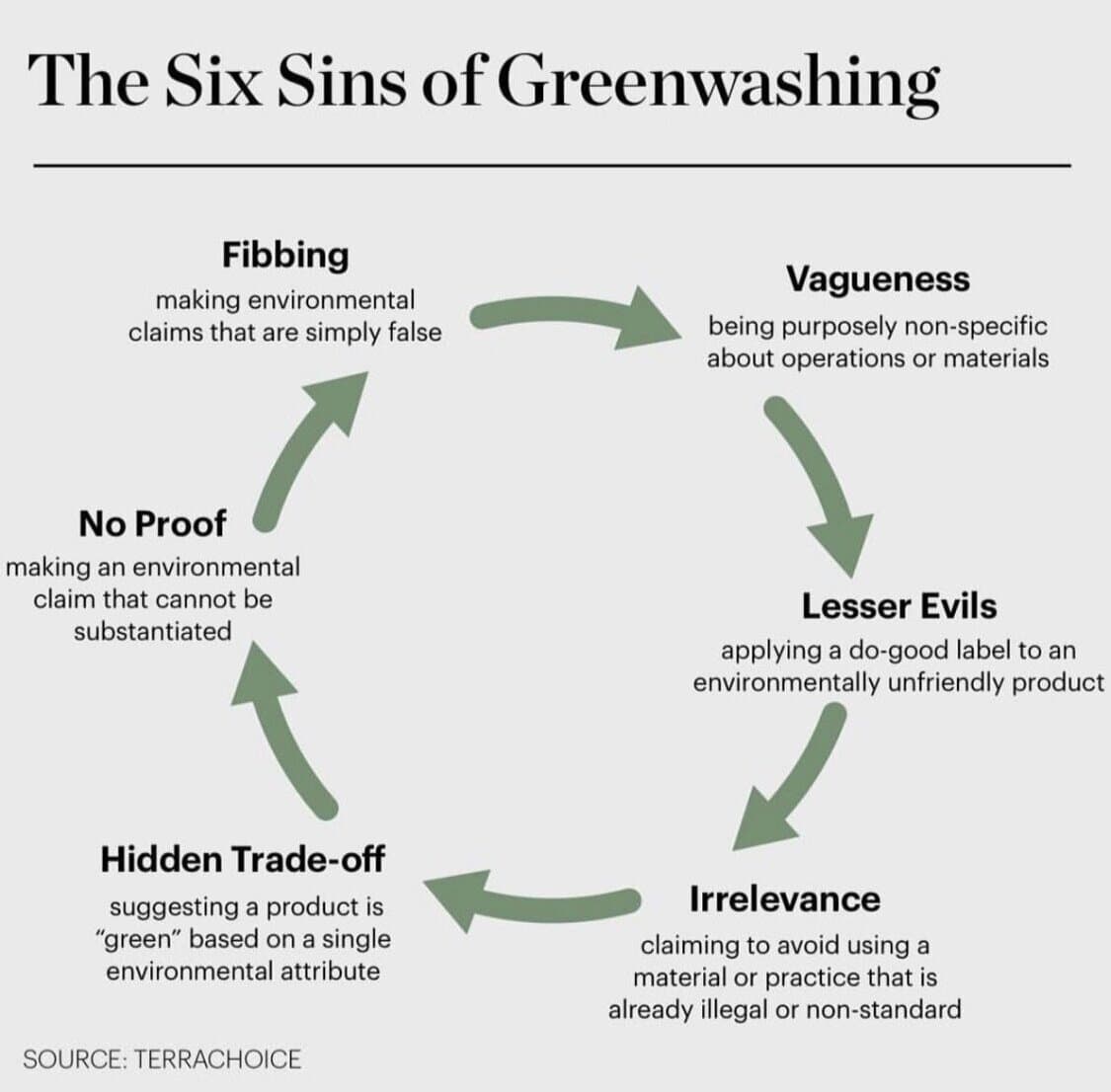
Not Looking at a Product’s Full Lifecycle
For at least a century, consumerism has followed a linear chain: create, use, and dispose. Waste and environmental impact tend to occur toward the beginning – how materials are sourced and an item crafted – and the end – particularly how and where a product will be disposed. This approach has resulted in a glut of products – in the fashion industry’s case, extreme textile waste – filling landfills. The circular economy has been one solution to address this pattern: create products that can be reused or repurposed, whether that’s given a second life or broken down in some form. Greenwashing tactics, in this regard, tend to focus on just one aspect of how a product is created, manufactured, and disposed. Common strategies include:
Claiming a product is made from sustainable materials: For instance, recycled polyester or organic cotton, without thinking about the water or energy needed to generate the material, the dyes used, or how the garment will be repurposed once it’s damaged or worn beyond wear.
Focusing just on manufacturing or operational practices: A common strategy is claiming a factory, stores, or corporate facility uses solar power or energy-efficient lighting without considering their full supply chain, the actual product created, or all related greenhouse gas emissions.
Just focusing on packaging: Packaging from poly bags to bubble wrap generates a significant amount of waste. While offering recycled, preferably paper-based packaging is a good starting spot, it’s a minute portion of the full sourcing and manufacturing process.
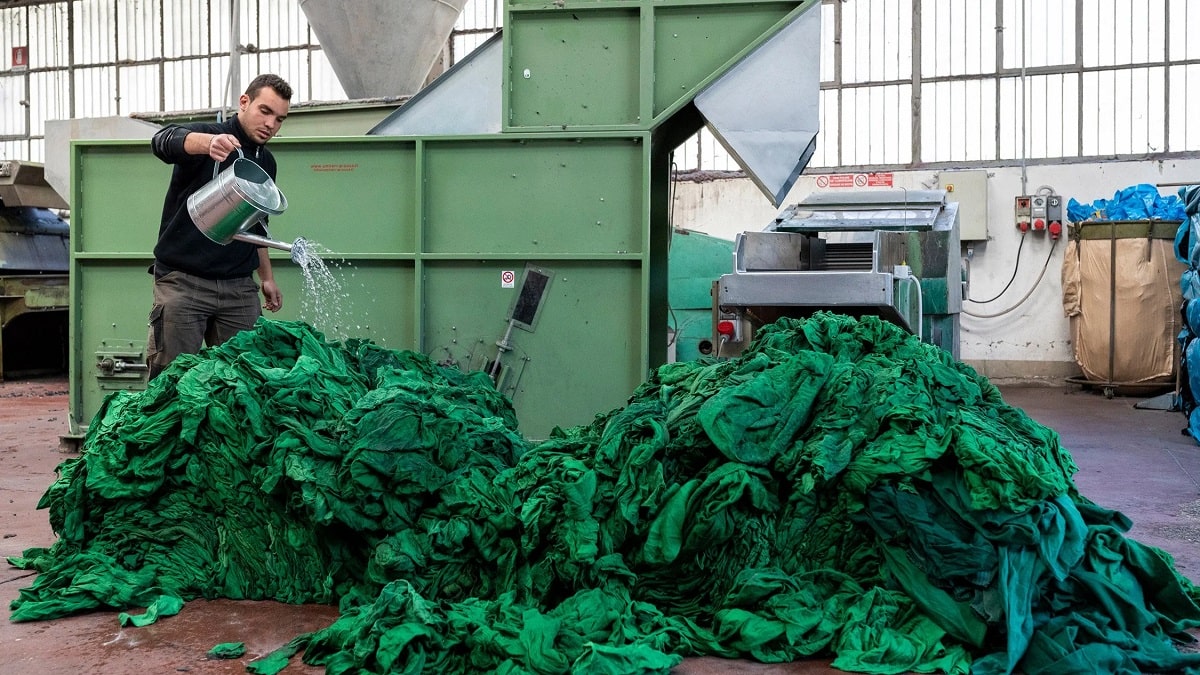
Buzzwords that Can’t Be Backed Up
Buzzwords tend to be meaningless, whether they’re illustrating perceived sustainability or not. You’ve likely come across the following:
All natural: “Natural” is simply a descriptor for a product sourced from something natural or not altered significantly beyond its default state. It’s essentially the most meaningless buzzword and a quintessential example of deceptive marketing speak. In terms of apparel, it’s often used for non-synthetic materials without taking into account water consumption, energy used in production, or outside chemicals. You’ll see this commonly used in the context of cotton, as well as viscose – rayon sourced from wood pulp that’s processed with acetone, ammonia, and other harmful chemicals.
Biodegradable: We’re increasingly seeing this term applied to anything from paper-sourced materials to bioplastics. “Biodegradable” turns into greenwashing when the product or its packaging doesn’t describe the conditions essential for the material to properly biodegrade. In the case of bioplastics, these corn-based materials can require a high-heat commercial compost environment and should never be placed in your recycling.
Recyclable: Similar to “biodegradable,” “recyclable” can be a greenwashing word if you can’t tell which components are recycled and where and how they should be recycled. For instance, poly and plastic bags can be recycled, but often need to be dropped off at a separate facility.
Vegan: We’ve seen this with “vegan” and “eco” leather – terms that can apply to mushroom- and apple-based sources to polyurethane and PVC that leach toxic substances, don’t degrade, and just generate microplastics long term.
Recyclable materials: Especially concerning fabric’s production, you’ll see this when RPET or ocean-plastic sourced polyester is combined with a virgin synthetic or cotton and often doesn’t take the material’s lasting impact into account.
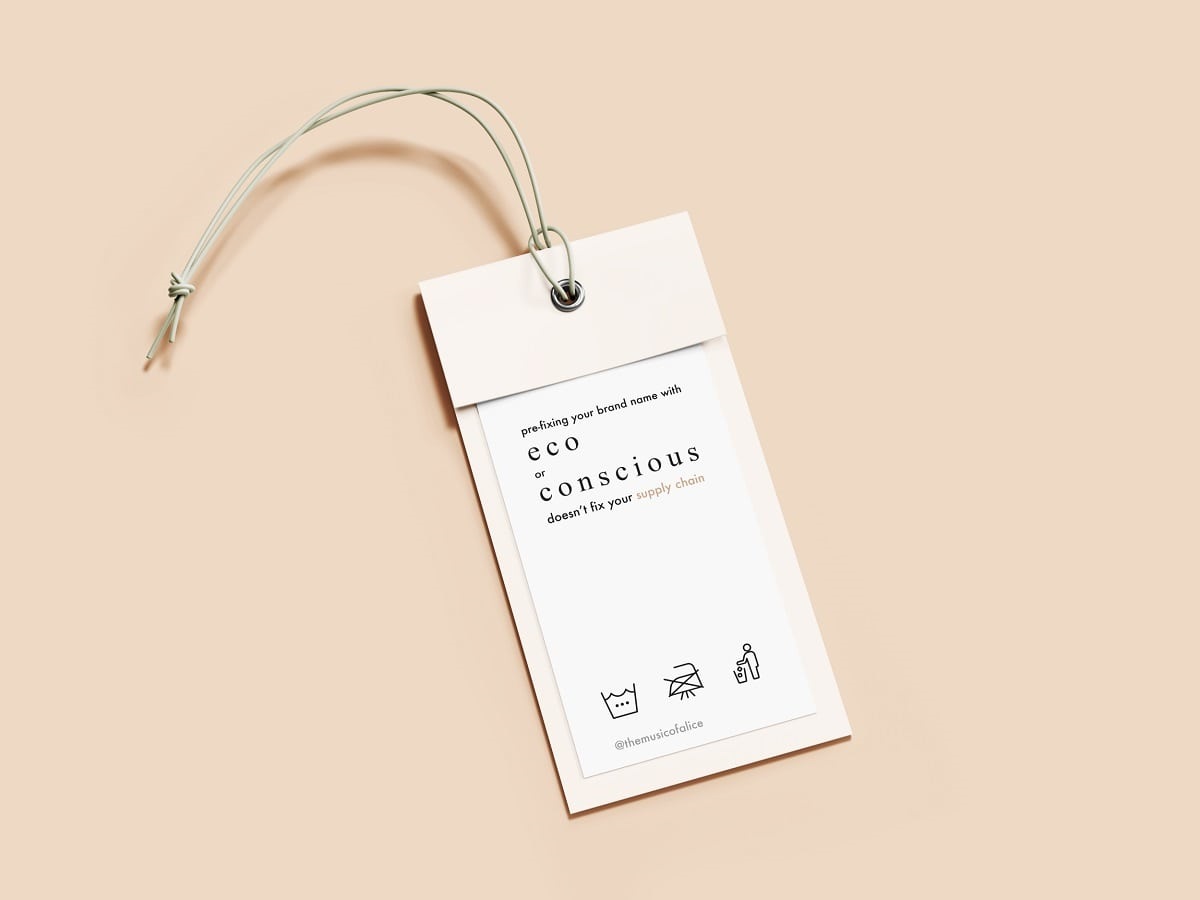
Using Ethical and Sustainable Interchangeably
Ideally, a product should be made ethically – safe work conditions, fair wages, and no animal abuse – as well as sustainably through the supply chain. Unfortunately, wording about ethical practices can supersede or completely obscure whether a product and manufacturing practices harm the Earth in some form. You’ll likely see Fair Trade certification played up in this regard. Understand the differences between ethical and sustainable fashion, and the overlap between the two.
Using “Less” of Something
“Less” often gets bandied around in the context of having a smaller impact on the Earth. However, in the same light as larger plastic lids replacing straws in food service, something taken away at one point in the supply chain gets added back in another context. Or, “less” simply means a thinner, cheaper product that still has a similar impact on the Earth. You might see this as:
Using less plastic or polyester: The virgin material is still present but gets supplemented with a recycled or reused source, or what results is just thinner, shoddier, and less reliable.
Small batch: Outside of sustainability, “small batch” often implies limited edition and exclusive. Although “small batch” manufacturing can help with reducing excessive items produced, it fuels two concerning trends in fashion: hyper, overpriced consumption – for instance, successive streetwear drops that are quickly marked up on the secondary market – and brands get in the habit of rolling out multiple “small batch” collections in a shorter timeframe rather than just producing less.
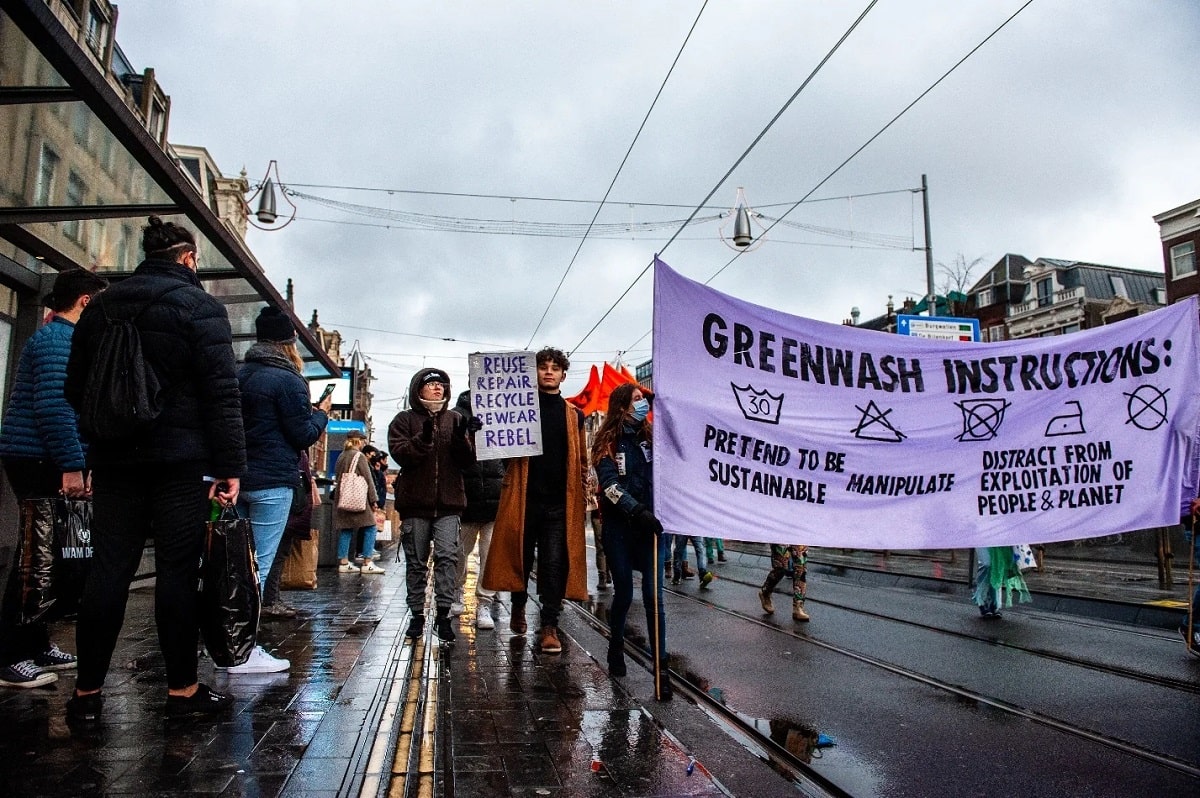
Not Examining the Full Supply Chain
True sustainability starts with how materials and components get sourced, how they’re manufactured, how factories, corporate offices, warehouses, and stores operate, and reducing emissions in transport between these destinations. In this regard, a common greenwashing strategy is claiming sustainability at one point in the supply chain without considering how all of these components interact and their overall effects on our world. Strategies we’ve seen in the fashion industry include:
Climate pledges: This may go by a name like net-zero carbon emissions, or focus on planting trees or using solar panels to offset emissions in some form. While this is a step in the right direction, these efforts frequently focus just on a brand’s corporate offices and leave contracted factories, shipping companies, and warehouses out of the picture.
Hiring a sustainability team: These are about as effective as corporate diversity, equity, and inclusion (DEI) efforts – that is to say, mostly a smokescreen that makes little internal change, let alone any revisions to manufacturing or business practices.
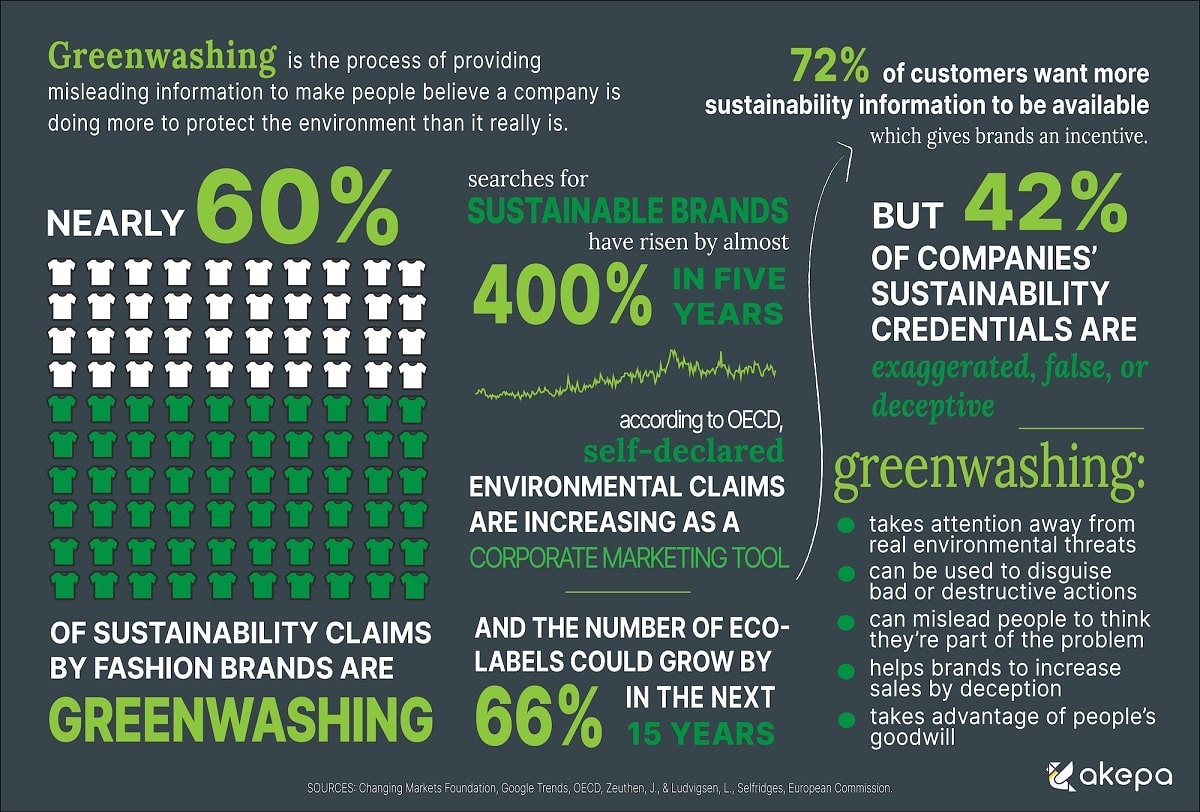
Signs of a Greener, More Sustainable Product
So now you know what greenwashing looks like, what are some signs of a sustainable fashion brand?
Full attention to the product and its packaging: The product itself is fully made with sustainable materials – preferably organic cotton or linen over recycled polyester – in a factory that’s transparent about its operations. It’ll be shipped to you with minimal packaging, made with recyclable paper- and cardboard-based sources. You know which parts of the packaging can be recycled, and how they should be sorted. As well, the product is either backed with a lifetime guarantee for repairs, or the brand has a recycling or similar end-of-life reuse plan. These attributes reflect not just a single or handful of collections but the full product line. You also likely won’t see seasonal collections but new products released periodically or updates to staple items.
Identifiable certifications: Buzzwords aren’t front and center. Instead, packaging or the brand’s website includes multiple certifications that support its operations and manufacturing practices. Common ones include: USDA certified organic, Global Organic Textile Standard (GOTS), Forest Stewardship Council (FSC), certified B corporation, Carbon Trust Standard, Fair Trade certified, World Fair Trade Organization (WFTO), SA8000 for factory working conditions, Bluesign certified for chemical exposure and energy and water use, and Oeko-Tex (Standard 100) for fabrics and other components.
Supply chain transparency: A brand’s website will list the names of partnering factories, warehouses, and logistics operations, with information about their working conditions, energy sources, and carbon emissions.

Trending
2
3
4
5
6
7
8
9
10










